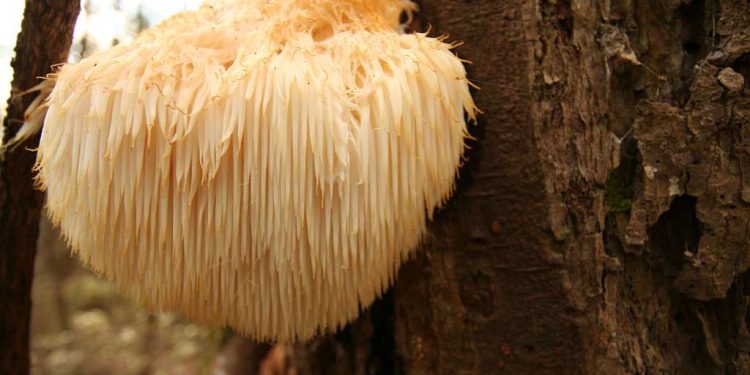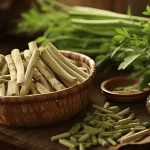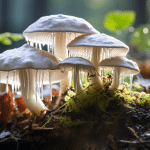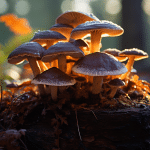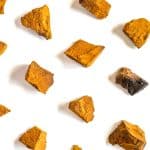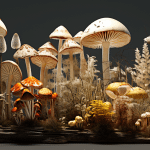When it comes to supporting brain health, choosing our favorite mushrooms is, well, kind of obvious. Lion’s mane mushrooms are always a high priority for us.
We like not only that you can find lion’s mane fruiting bodies in forests across much of the country, but also that it is being farmed by a growing number of farmers, so it is also frequently available to you as a delicious food.
But as far as supplements go, there is one trend that we noticed we would like to discuss: the Lions Mane Mycelium is not of the same quality or strength as Lions Mane fruiting bodies.
Lion’s Mane Fruiting Bodies
Lion’s mane fruiting bodies are the part of the mushroom that you see above ground. This is the typical cap or mushroom shape. Lion’s mane fruiting bodies are the white, mane like part you see growing out of a tree like the image below.
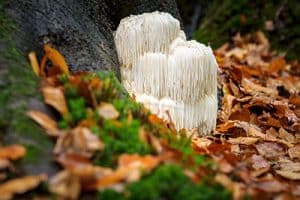
Why You Want Lion’s Mane Fruiting Body – Not Lion’s Mane Mycelium
In the United States, growing fungi on filler substrates such as grains is cheaper, easier, and faster than growing fruiting bodies. That is why so many products and supplements use Lions Mane mycelium. But cheap, fast, and simple (especially when filled with lots of filler) is not what you want when it comes to your health. Think about it like this: Why would you eat lettuce roots rather than waiting for a full head of lettuce to grow.
And with lion’s mane mushroom growing on grains, you cannot really pull out the mycelium from the grains, so what you end up with is a watered down mushroom product. There is a way that companies can grow the pure mycelium without grains, in something called a bioreactor, but, again, they are far cheaper growing it on cheap grains, such as rice or oats, as a filler, and mixing everything together.
There are some benefits to mycelium, which we’ll start to dig into below.
But first, here’s a video that goes into more detail:
What is Lion’s Mane Mycelium?
For mushrooms, the mycelium is pretty important. This piece of the mushroom forms a tight web under the ground, much like a tree root, and it sets the stage for a mushroom to thrive in a given environment.
Lion’s mane mycelium is generally not visible to our eyes. It is working its mycological magic under ground, or on logs, or on trees. But although lion’s mane mycelium is essential to a mushrooms survival, it is not traditionally used for its own health benefits. This Scientific American piece explains just how awesome mycelium is. But that “scaffolding” of mushrooms is not something you want in your supplements.
As stated earlier, mycelium, or roots, usually contain as much as 70%-90% of the granular filler, missing many essential functional compounds. To put on our scientific hats, the lion’s mane mycelium is missing the Hericinone, Dilinoleoyl-Phosphatidylethanolamine (DLPE), Amyloban, Amycenone, 3-Hydroxyhericenone F, Hericenes, Hericerins, and Erinacerins, all well-studied compounds to support neural growth factors and overall cognitive health.
The actual fruiting bodies also contain up to 29 times as much 1 3 1 6 b-glucans, which are well studied for supporting immune health. This is the reason we use only 100% fruiting bodies in the products we offer on this website, so you never need to worry that a product is missing out on the good stuff, is filled with fluff or filler, or is exceedingly watered down.
What to Know Before You Buy
Make sure it’s Certified Organic Lions Mane.
Real Mushrooms and FreshCap mushrooms, by the way, are certified organic by the USDA, which is what we are really excited about, quality products. To keep that certification, everything we use also has to be organic, from our substrates (the stuff mushrooms grow on) to our cleaning supplies. Every product we sell, and every ingredient we use, is assigned a batch number and tracked.
How is the lion’s mane extracted
Mushrooms have a large number of active components, which must be extracted in order to access these in the body. The tinctures we feature on this website are always double extracted lion’s mane.
The active compounds in mushrooms are both alcohol-soluble (triterpenes) and water-soluble (b-glucans). To achieve a full-spectrum of mushroom support, we extract ours using organic cane alcohol and hot water, and carefully blend the two. We follow science, extracting our lion’s mane (and any mushrooms we use) with optimal percentage of alcohol, temperature, and length of time.
Has the supplement been tested?
Before purchasing, make sure that your lion’s mane has been tested for purity and potency. Every batch of lion’s mane that we use goes through laboratory testing.
We check for heavy metals and biological contaminants, ensuring that our products are pure. We also check for concentrations of the active compounds.
You can find our favorite capsules, powders, and tincture’s on the following pages of our website and learn more about each individually:
List of Best Lion’s Mane Supplements
List of Best Lion’s Mane Powders
List of Best Lion’s Mane Tinctures
List of Best Lion’s Mane Gummies
Additional Resources:
Updated 10/10/2022
